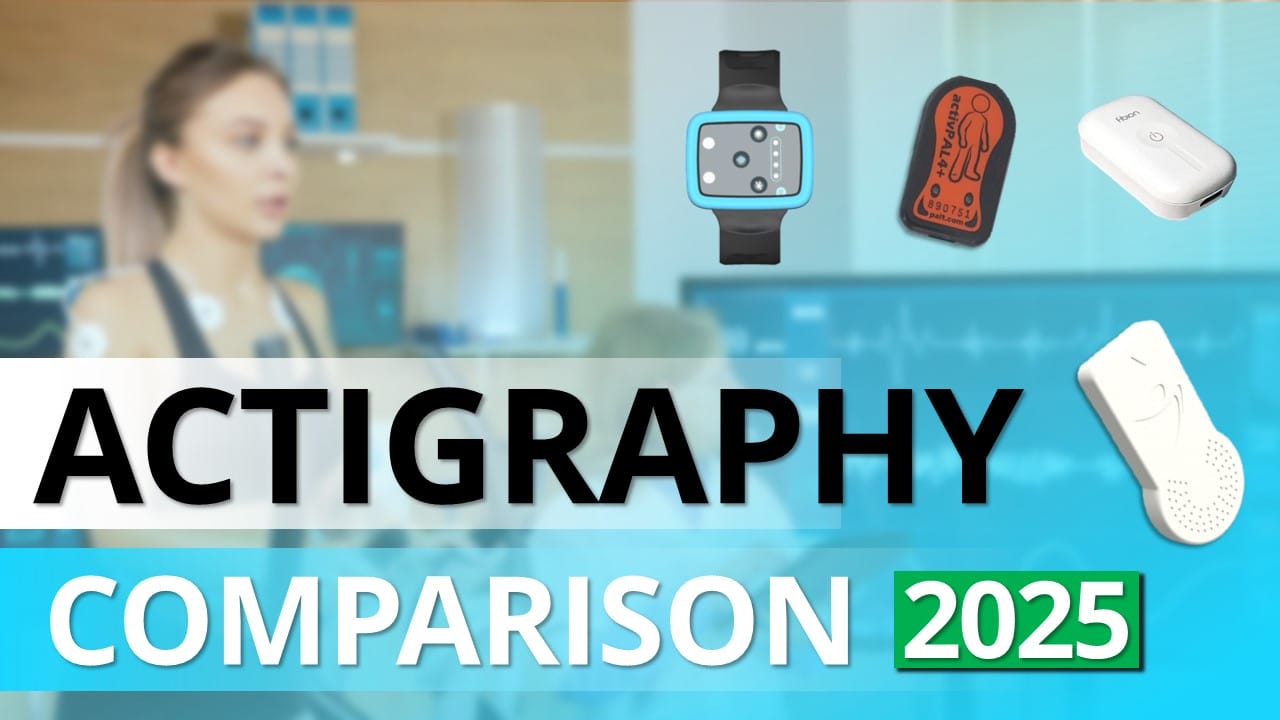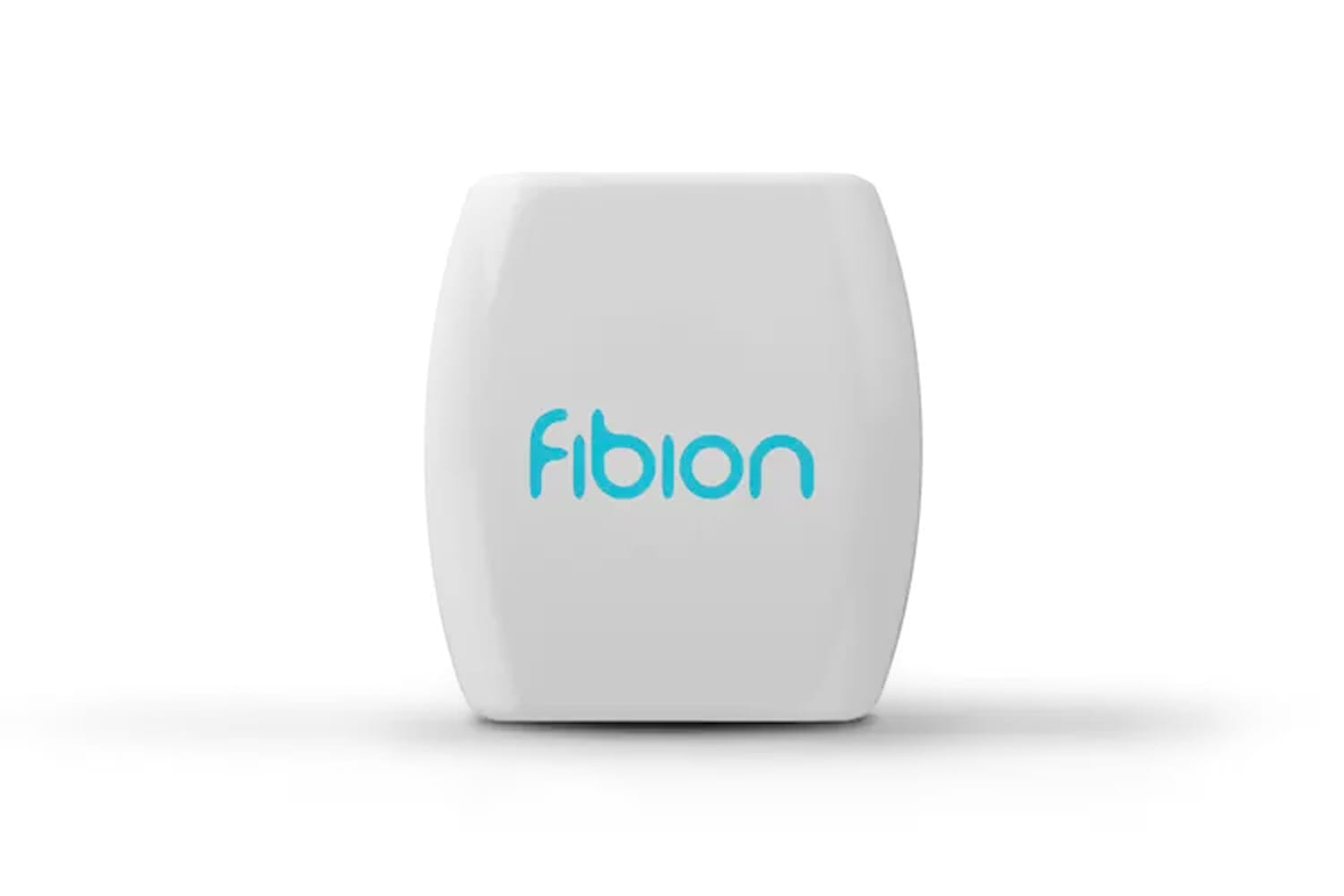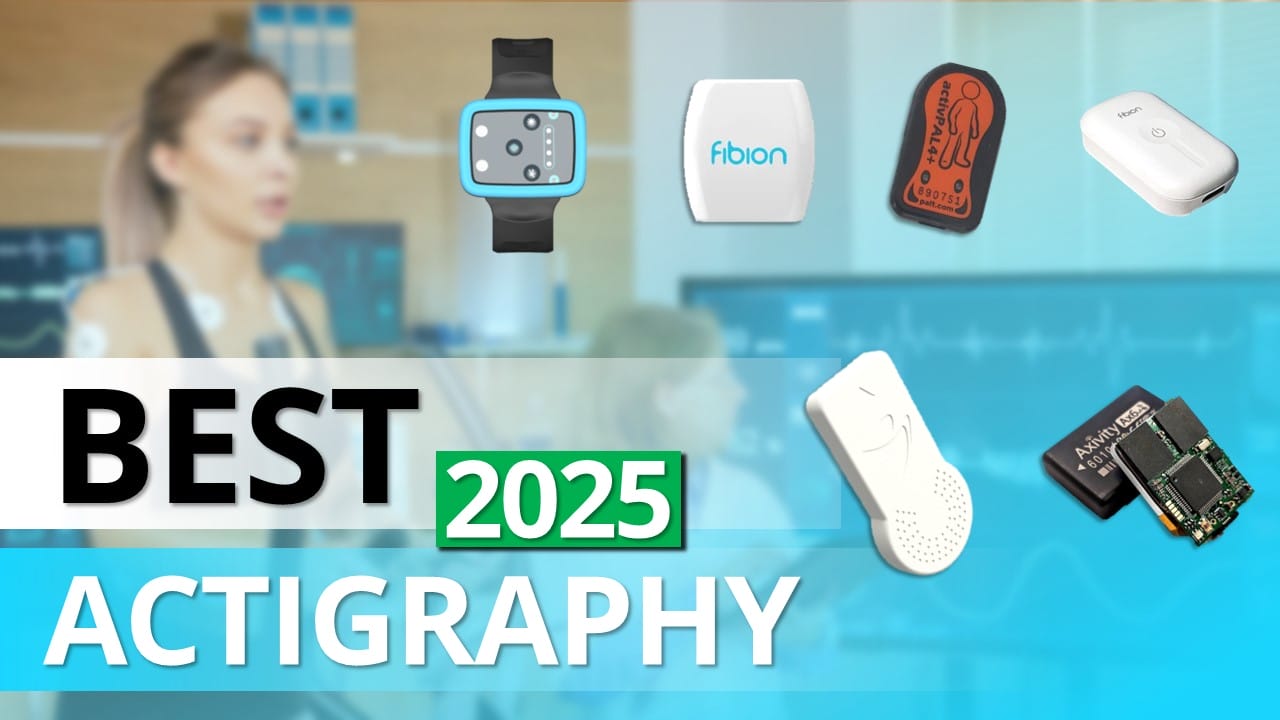1. Introduction
Selecting the right actigraphy device is essential for researchers aiming to gather precise data on sleep patterns, physical activity, and circadian rhythms. With a wide range of devices available, each offering different features, it becomes crucial to understand and compare these options to make informed decisions.
The purpose of this article is to provide a detailed comparison of the top actigraphy devices of 2024, focusing on their features, costs, and performance. By examining these key aspects, we aim to guide researchers in choosing the most suitable device for their specific research needs.

2. Importance of Comparing Actigraphy Devices in Research
Actigraphy devices play a vital role in various research fields, from sleep studies to physical activity monitoring. Differences in sensors, battery life, data storage, and connectivity can significantly impact the quality of data collected. Therefore, a thorough comparison helps researchers select devices that not only meet their specific requirements but also offer the best value for their investment. Understanding these differences ensures the selection of devices that enhance data accuracy, improve research efficiency, and contribute to more reliable study outcomes.
| How to get access to the accelerometer comparison sheet: Simply click here |

3. Overview of Actigraphy Devices
3.1. What Are Actigraphy Devices?
Actigraphy devices are wearable monitors designed to track and record movement and light exposure, providing valuable data on sleep patterns, physical activity, and circadian rhythms. These devices typically include sensors such as accelerometers, gyroscopes, and light sensors to capture comprehensive data about an individual’s behavior and environmental interactions. The data collected is then used to analyze various health-related metrics, making actigraphy an indispensable tool in both clinical and research settings.

3.2. Applications of Actigraphy Devices
Actigraphy devices have a broad range of applications, including:
- Sleep Research: Used to monitor sleep patterns, quality, and disturbances. Actigraphy helps in diagnosing sleep disorders, assessing the impact of interventions, and studying sleep behaviors over long periods.
- Physical Activity Monitoring: These devices measure daily activity levels, energy expenditure, and patterns of movement. They are essential in studies related to physical health, fitness, and rehabilitation.
- Sedentary Behavior Studies: Actigraphy is used to track periods of inactivity and posture changes, which is crucial in research focused on the health impacts of sedentary lifestyles.
- Circadian Rhythm Studies: By assessing light exposure and activity cycles, actigraphy helps in understanding circadian rhythms and their impact on sleep-wake patterns and overall health.
3.3. Importance of Selecting the Right Device for Research Needs
Selecting the appropriate actigraphy device is critical for ensuring accurate and reliable data collection tailored to the specific needs of a study. The right device should match the study’s objectives, whether it’s focusing on sleep, physical activity, or circadian rhythms. Key factors to consider include:
- Sensor Type and Accuracy: The quality and type of sensors affect the precision of the data. Devices with high-resolution accelerometers and additional sensors like light and temperature sensors provide more comprehensive data.
- Battery Life: Long battery life is crucial for uninterrupted data collection, especially in longitudinal studies.
- Data Storage and Connectivity: Adequate storage capacity and reliable data transfer options (such as USB or Bluetooth) ensure that data can be easily accessed and analyzed.
- Durability and Water Resistance: Depending on the study environment, the device’s durability and water resistance can be important for ensuring consistent performance in various conditions.
| How to get access to the sleep wearables comparison sheet: Simply click here |
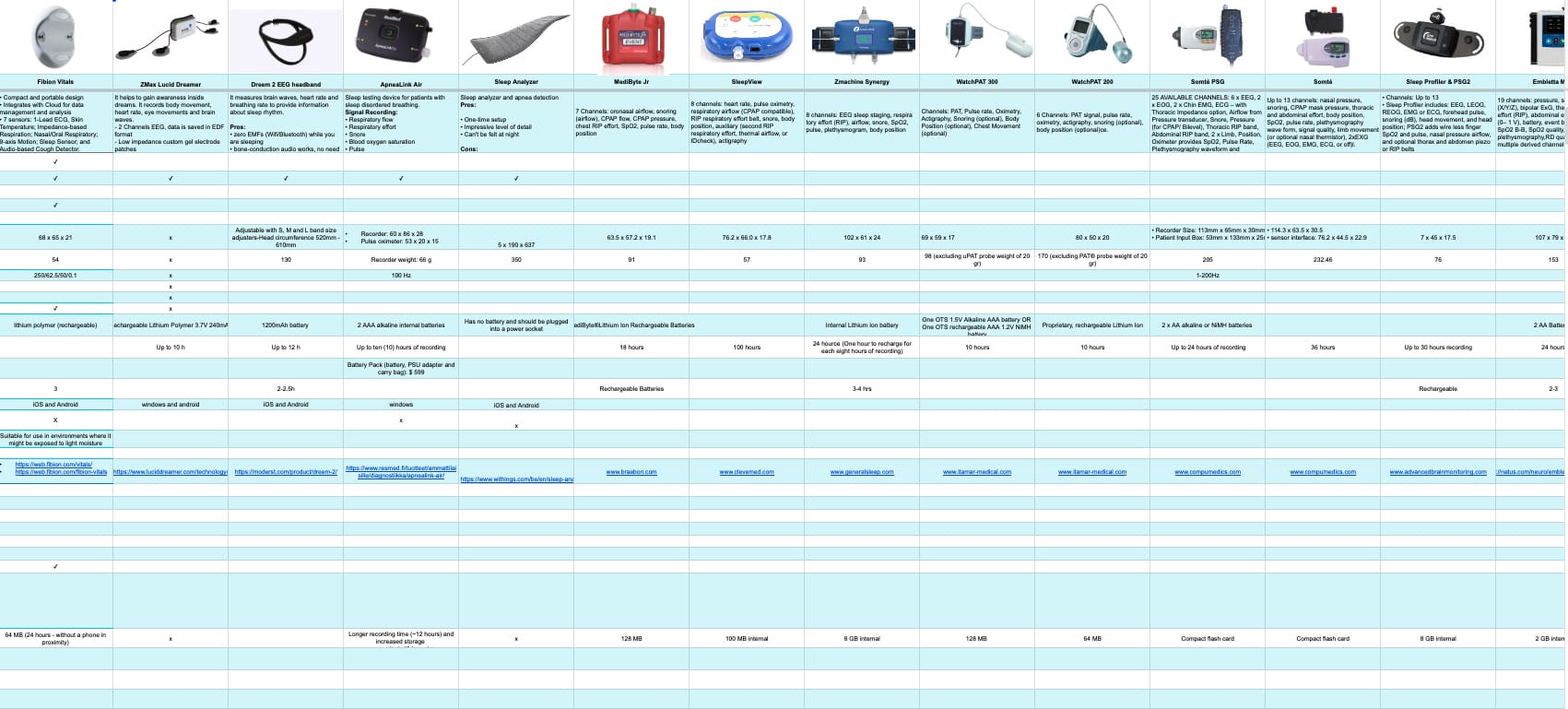
4. Key Features to Consider
4.1. Types of Sensors Used
Actigraphy devices utilize a variety of sensors to collect comprehensive data:
- Accelerometers: Measure movement and activity levels. Most actigraphy devices use 3-axis accelerometers to capture data in three dimensions.
- Gyroscopes: Track orientation and rotation, providing additional context to movement data.
- Light Sensors: Monitor light exposure, which is crucial for circadian rhythm studies.
- Temperature Sensors: Measure ambient temperature or body temperature to correlate with activity and sleep patterns.
4.2. Accuracy and Reliability of Data
The accuracy and reliability of data depend on the quality and calibration of the sensors. High-resolution accelerometers and additional sensors like gyroscopes and light sensors enhance the precision of the data collected. Reliable data is essential for making valid inferences in research, and thus, selecting devices with proven accuracy is critical.
4.3. Battery Life
Battery life is a crucial factor, especially for long-term studies that require continuous monitoring without frequent recharging. Devices with extended battery life ensure uninterrupted data collection, reducing the risk of data loss and the burden of maintenance.
Battery life varies significantly across different actigraphy devices. For instance:
- ActiGraph GT9X: Known for moderate battery life, suitable for short to medium-term studies.
- Condor ActTrust 2: Offers long battery life, ideal for extended sleep research.
- Fibion SENS and Fibion Research: Both devices have optimized battery life for long-term physical activity and sedentary behavior studies.
4.4. Data Storage and Connectivity
The storage capacity of an actigraphy device determines how much data can be stored before it needs to be transferred. Key data transfer options include:
- USB Connectivity: Allows for direct and reliable data transfer to computers.
- Bluetooth: Enables wireless data transfer, facilitating real-time monitoring and easier data access.
- Cloud Integration: Some advanced devices offer cloud storage and integration, allowing data to be accessed and analyzed remotely.
4.5. Ease of Data Access and Integration with Software
Ease of data access and the ability to integrate with various software platforms are essential for efficient data management. Devices that offer user-friendly interfaces and compatibility with popular data analysis tools streamline the research process.
4.6. Durability and Water Resistance
Durability is a significant consideration, particularly in field studies or environments where the device might be exposed to harsh conditions. A durable device ensures consistent performance and longevity, reducing the need for frequent replacements.
Water resistance is crucial for devices used in diverse environmental conditions, including studies involving outdoor activities or in settings where the device might be exposed to moisture. Devices with water-resistant or waterproof features offer greater flexibility and reliability in various research scenarios.
Selecting an actigraphy device with the right combination of these features ensures that researchers can gather accurate, reliable data tailored to their study requirements. This careful selection process ultimately enhances the quality and validity of research outcomes.
5. Cost Comparison
5.1. Overview of the Pricing for Various Actigraphy Devices
Understanding the cost of actigraphy devices is essential for budgeting and determining the best value for your research needs. Below is an overview of the pricing for some of the top actigraphy devices:
- ActiGraph GT9X: Approximately US$ 500
- Condor ActTrust 2: £599 (US$ 758)
- GeneActiv: US$ 260 – US$ 375
- MotionWatch 8: US$ 995 – US$ 1,095
- Fibion SENS: €135 per device (US$ 145)
- Fibion Research: €390 per device (US$ 419)
- Axivity AX3: £129 – £139 (US$ 163 – US$ 176)
- Axivity AX6: £189 – £199 (US$ 239 – US$ 251)
- activPAL: £290 – £520 (US$ 367 – US$ 657)
- Micro Motionlogger Watch: US$ 750 – US$ 995
5.2. Factors Influencing the Cost
Several factors influence the cost of actigraphy devices, including:
- Features: Devices with advanced features like multi-sensor integration, high-resolution accelerometers, and cloud connectivity tend to be more expensive.
- Brand: Established brands with a reputation for quality and reliability may price their products higher.
- Additional Services: Costs can also be influenced by the inclusion of additional services such as data analysis software, customer support, and warranties.
5.3. Comparison of Cost-Effectiveness and Value for Money
When comparing cost-effectiveness, it is crucial to consider both the initial purchase price and the long-term value offered by the device. For example:
- Fibion SENS and Fibion Research: With a cheap initial cost (€135 or US$ 145), and advanced features, accuracy, and suitability for longitudinal studies, they provide excellent value for money and are ideal for your research. The Fibion Research device, priced at €390 (US$ 419), offers a more affordable option while still delivering robust performance for physical activity and sedentary behavior studies.
- Axivity AX3 and AX6: These devices offer competitive pricing (£129 – £199 or US$ 163 – US$ 251) and are ideal for large-scale studies due to their compact size and long battery life, providing good value for extended research projects.
By weighing these factors, researchers can choose devices that not only fit their budget but also offer the best performance for their specific study needs.
6. Performance in Research Applications
6.1. Sleep Research
Actigraphy devices play a critical role in sleep research by providing detailed data on sleep patterns, quality, and disturbances. For instance:
- Condor ActTrust 2: Provides extensive data on sleep stages and environmental factors, such as light and temperature, contributing to a thorough understanding of sleep behaviors.
6.2. Physical Activity Monitoring
Accurate measurement of physical activity is vital for studies on health and fitness. Key devices include:
- ActiGraph GT9X: Known for its high data accuracy and comprehensive activity tracking, suitable for a wide range of physical activity research.
- Fibion SENS: Delivers precise measurements of physical activity and sedentary behavior, making it a versatile tool for both clinical and field studies.
6.3. Sedentary Behavior Studies
Tracking sedentary behavior and posture is essential for understanding the health impacts of prolonged inactivity:
- activPAL: With its unique thigh-mounted design, activPAL accurately monitors posture and transitions between sitting, standing, and walking, making it a preferred choice for sedentary behavior studies.
- Fibion Research: Provides detailed insights into sedentary patterns and physical activity, supporting interventions aimed at reducing sedentary time.
6.4. Circadian Rhythm Studies
Accurate assessment of light exposure is crucial for circadian rhythm studies:
- MotionWatch 8: Equipped with light sensors, this device provides reliable data on light exposure, helping researchers understand its impact on sleep-wake cycles and overall circadian rhythms.
- GeneActiv: Also features light sensors and offers continuous data output, supporting comprehensive circadian rhythm analysis.
By evaluating the performance of these devices in different research applications, researchers can select the most suitable tools to meet their study objectives and achieve reliable, high-quality results.
7. Pros and Cons of Top Actigraphy Devices
7.1. ActiGraph GT9X
- Delivers reliable and precise data for both physical activity and select sleep-related studies.
- Seamlessly integrates with ActiLife software for detailed data analysis.
- Robust and water-resistant design makes it suitable for various research environments.
- Moderate battery life of 14 days, which may be shorter compared to some alternatives.
- Higher cost for advanced features, including software licensing fees.
7.2. Condor ActTrust 2
- Accurately tracks light exposure, ideal for circadian rhythm research.
- Delivers detailed data for both sleep and activity monitoring.
- Slightly larger size, which might affect comfort and aesthetics.
- Limited wear locations, potentially reducing its adaptability.
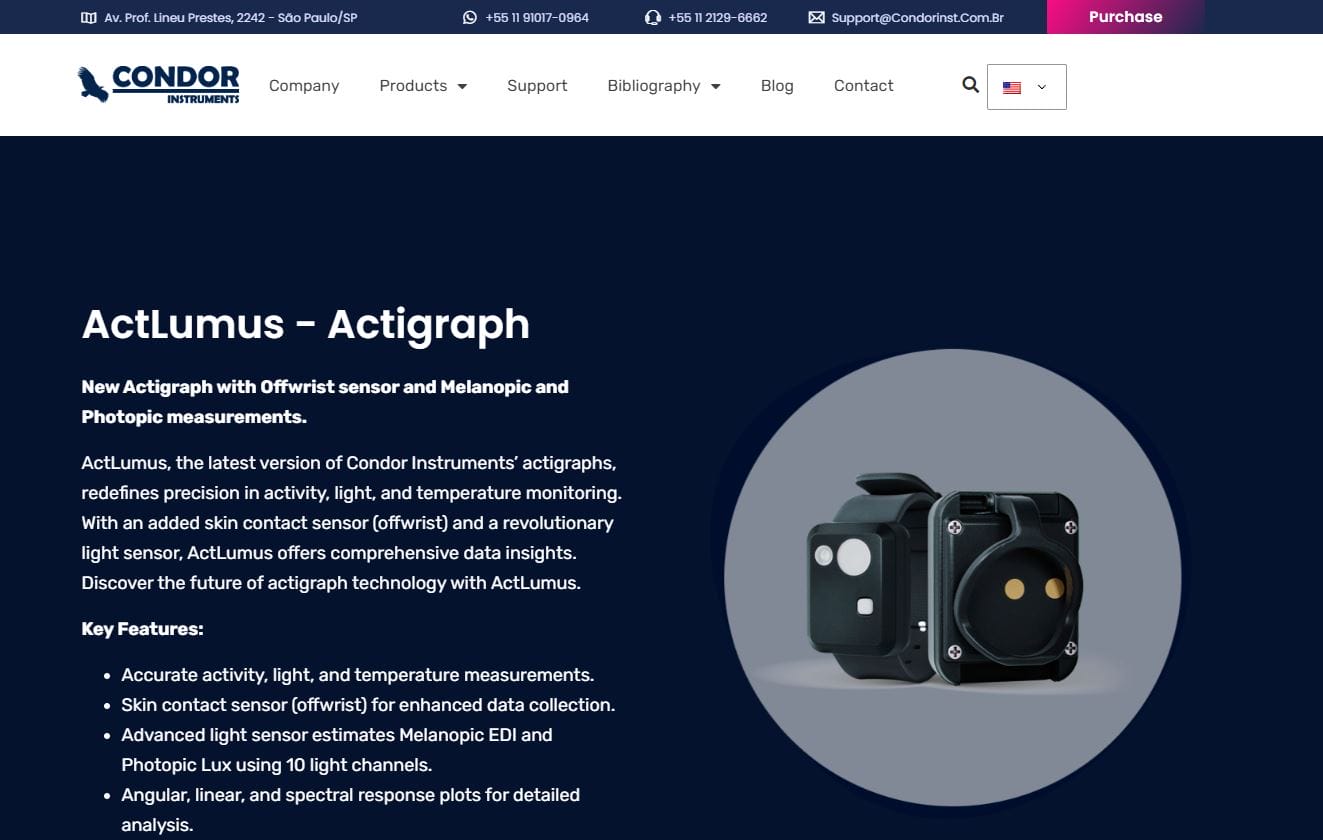
7.3. Fibion SENS
- Extremely simple for both participants and researchers to use.
- Prolonged battery life enables effortless long-term data collection.
- Durable and reliable for extended study periods.
- Seamless cloud integration
- Versatile applications with accessories (medically approved patch, wrist strap etc.)
- Focuses solely on acceleration data without integrating other physiological measurements.
7.4. GeneActiv
- Effectively captures light exposure, making it valuable for circadian research.
- Stylish, watch-like appearance ensures comfort during prolonged use.
- Higher cost compared to simpler tracking devices.
- Does not support heart rate or HRV measurement.
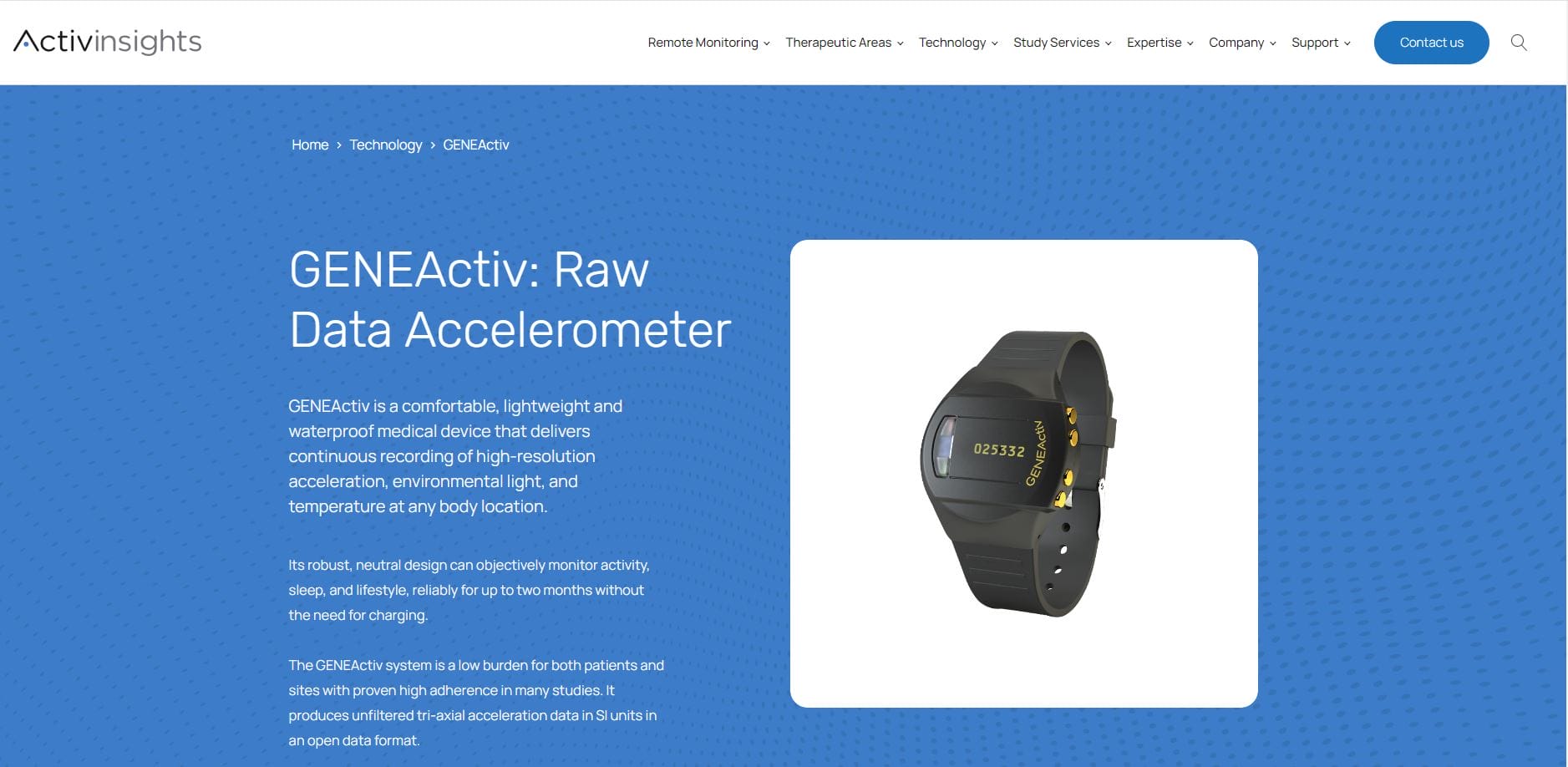
7.5. MotionWatch 8
- Long-lasting battery life supports extended data collection (up to 120 days without the light sensor).
- Robust data logging capabilities ensure detailed monitoring.
- Equipped with multiple sensors, including light and temperature, for comprehensive analysis.
- No off-wrist detection, which could affect data validity in certain studies.
- Primarily designed for sleep and activity monitoring, with limited versatility for other applications.
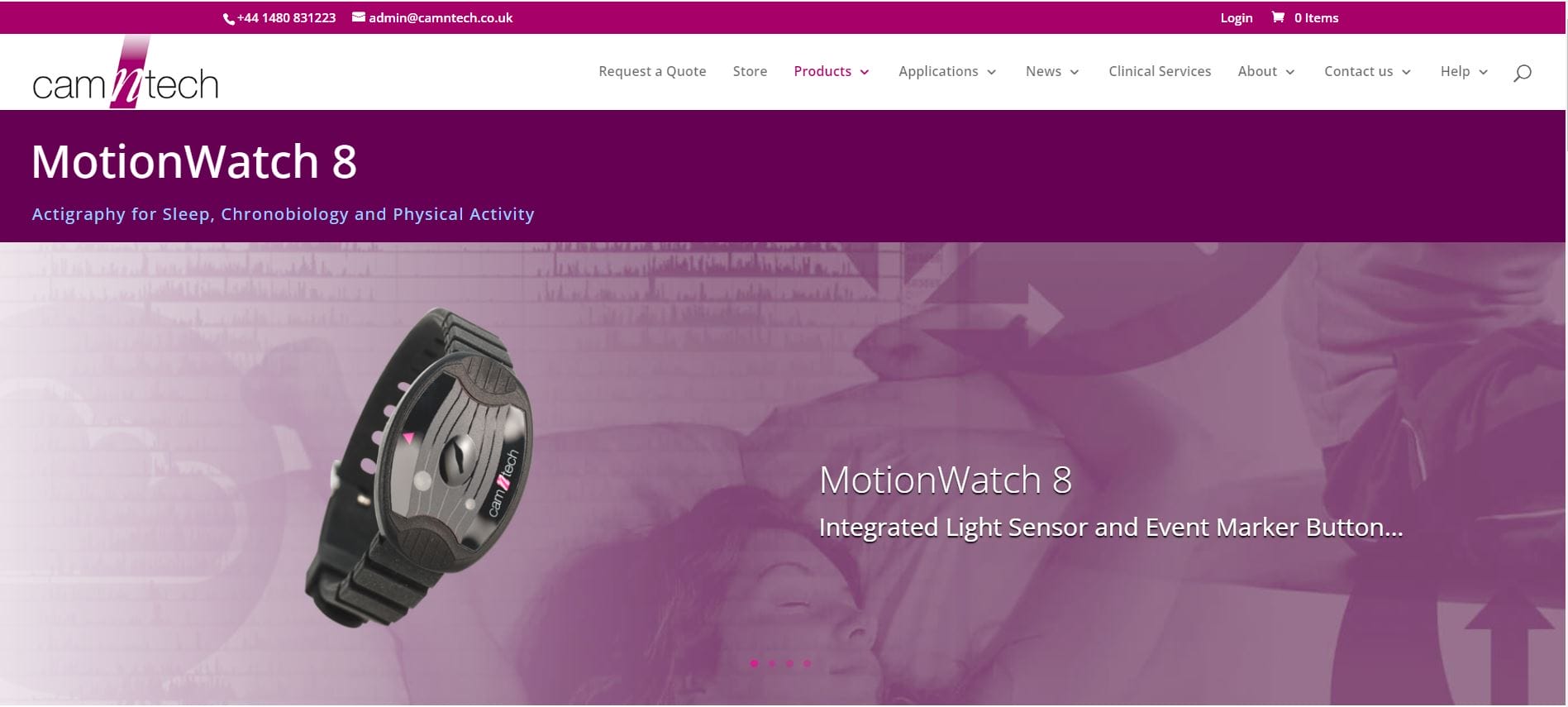
7.6. Fibion Research
- Captures comprehensive data for physical activity and sedentary behavior analysis.
- Features high-precision sensors tailored for research applications.
- Provides a user-friendly interface for seamless operation.
- Designed primarily for thigh placement, which may limit flexibility for other wear locations.
7.7. Axivity (AX3 and AX6)
- Compact and lightweight design ensures minimal interference with participants’ activities.
- Long battery life supports extended data collection, with up to 31+ days depending on configuration.
- Durable and waterproof, suitable for diverse study environments.
- Limited to acceleration data, lacking additional physiological or environmental sensors.
- No API or SDK for advanced research customization or raw data integration.
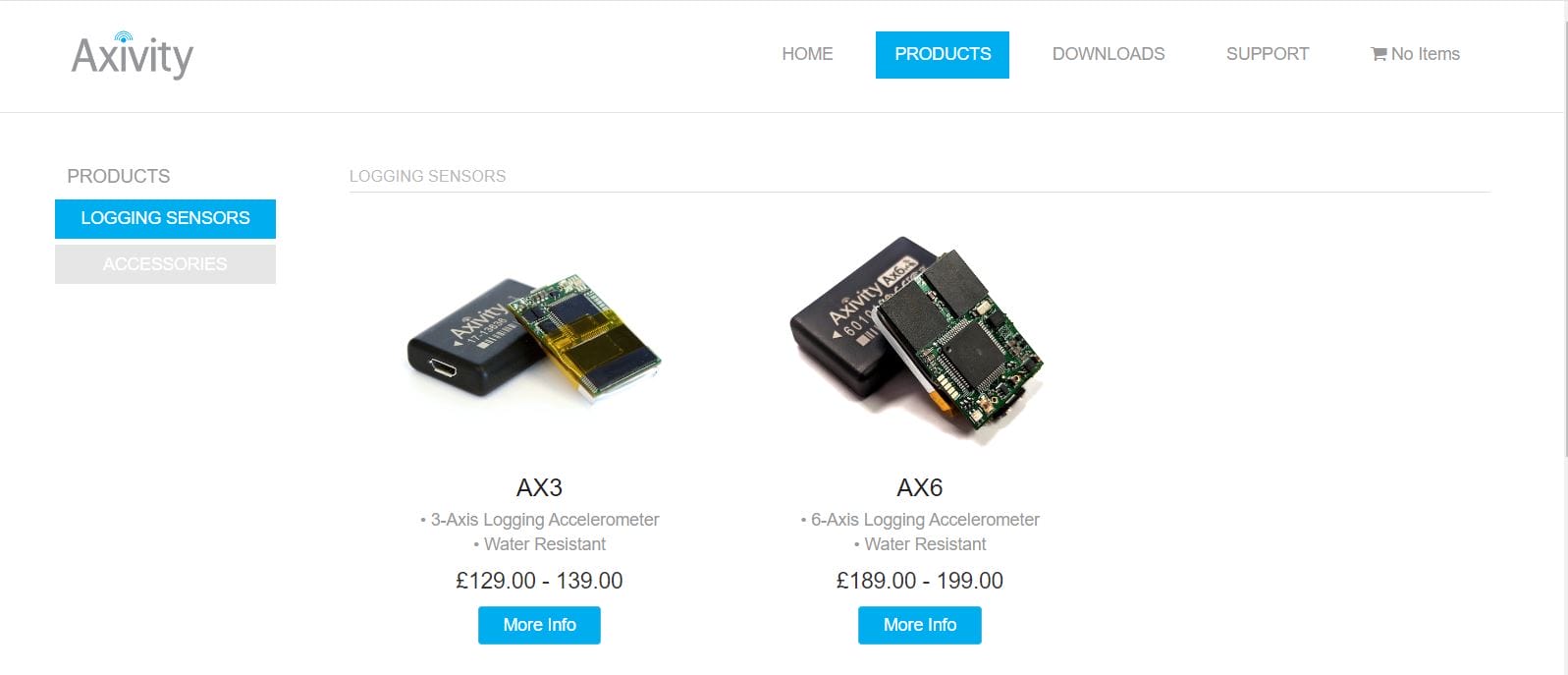
7.8. activPAL
- Provides detailed posture and activity tracking, offering unique insights into sedentary behavior.
- Easy to wear and use, making it participant-friendly.Accurately measures time spent sitting, lying, standing, and stepping.
- Does not measure physical activity intensity as effectively as some other devices.
- Designed primarily for sedentary and posture studies, limiting versatility for other applications.
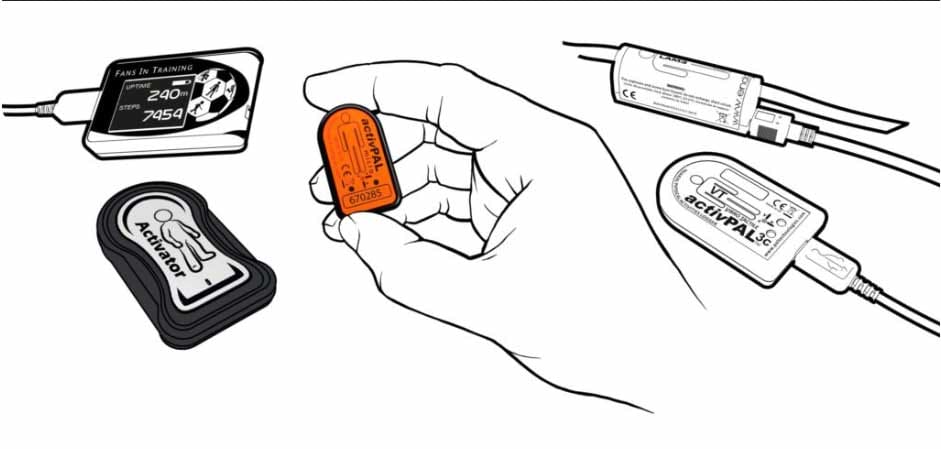
7.9. Micro Motionlogger Watch
- Provides robust data logging capabilities for sleep and activity research.
- Durable design ensures suitability for long-term wear.
- Versatile applications, including sleep studies and circadian rhythm analysis.
- Does not include off-wrist detection, which may affect data accuracy in certain studies.
- Lacks comprehensive physical activity metrics compared to more advanced devices.
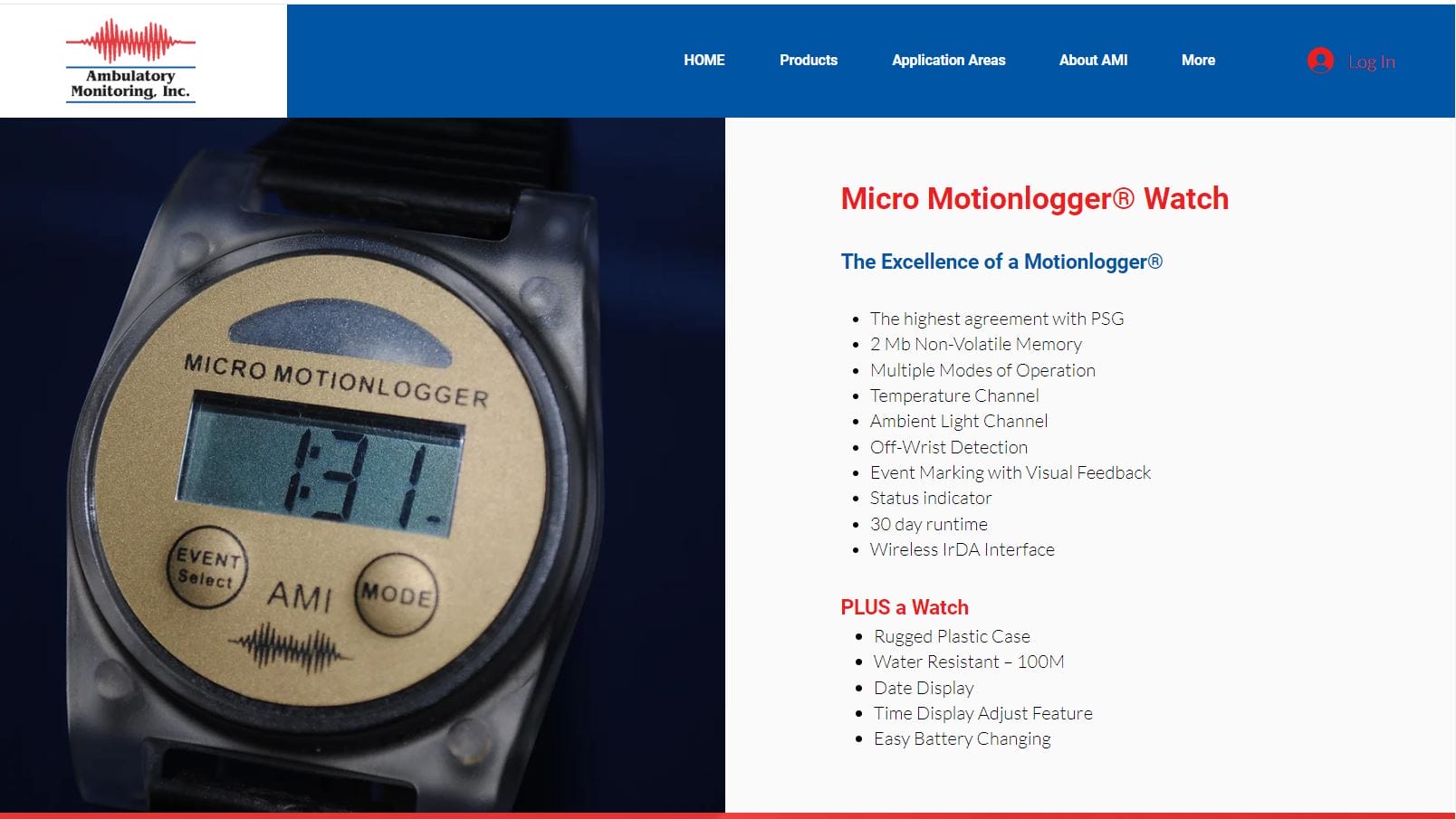
8. Conclusion
8.1. Summary of Key Findings from the Comparison
The detailed comparison of top actigraphy devices for 2024 reveals several important insights:
- ActiGraph GT9X: Offers high data accuracy and robust software integration, making it ideal for comprehensive activity and sleep studies. However, its battery life and price are limiting factors.
- Fibion SENS and Fibion Research: These devices offer precise activity and sedentary behavior monitoring, with the Fibion SENS being particularly suitable for longitudinal studies. Their cheap pricing and advanced features and reliability are excellent choices for your research.
- Condor ActTrust 2: Known for its comprehensive sensor suite and long battery life, making it excellent for detailed sleep research, but it comes at a higher price.
- GeneActiv: Both are durable, waterproof, and provide continuous data recording, suitable for various research applications. They are, however, more expensive.
- MotionWatch 8: Provides detailed sleep and activity data with long battery life but requires specific software, which adds to its cost.
- Axivity AX3 and AX6: Compact and durable with long battery life, these are cost-effective options for large-scale studies.
- activPAL: Offers detailed posture and activity tracking but has limitations regarding waterproofing and attachment methods.
- Micro Motionlogger Watch: Highly reliable with versatile features, but it is priced at a premium.
8.2. Recommendations for Selecting the Right Actigraphy Device Based on Research Needs
When choosing an actigraphy device, researchers should consider the following:
- Study Focus:
- For sleep research: Condor ActTrust 2 is an excellent choice due to its comprehensive sleep monitoring capabilities.
- For physical activity monitoring: ActiGraph GT9X and Fibion SENS provide high data accuracy and detailed analysis.
- For sedentary behavior studies: activPAL and Fibion Research offer precise tracking of sitting and standing activities.
- Budget Constraints:
- For cost-effective options: Axivity AX3 and AX6 provide excellent value for large-scale studies with budget constraints.
- For advanced features within a lower budget: Fibion SENS and GENEActiv offer robust features and long-term reliability.
- Data Requirements:
- For raw data needs: Devices like GeneActiv and ActiGraph GT9X provide unfiltered data suitable for custom analyses.
- For ease of use and automated data processing: Fibion Research and Fibion SENS simplify data collection and analysis, making them user-friendly.
8.3. Further Reading
For more detailed insights and comparisons, explore our related articles and resources:
- Exploring Actigraphy in Scientific Research: A Comprehensive Guide.
- Comprehensive Sleep Wearables and Actigraphy Comparison Sheet Download (Free Resource).
- Why Fibion SENS is the Best Tool for Clinical Research and Trials.
- Comprehensive Accelerometer Comparison Sheet Download (Free Resource).
- For more detailed comparisons and insights, explore our extensive Wearables & Accelerometer article collection.
You Might Also Be Interested
⭐ Read about Best Actigraphy devices in 2025. Read article here.
📅 Planning research measuring physical activity, sedentary behavior, or sleep? For a chat with our accelerometer and wearable expert, book a video call with Dr. Miriam Cabrita.

Disclaimer:
The brand names and product names mentioned in this article, including ActiGraph, Condor ActTrust, GeneActiv, MotionWatch, Axivity, activPAL, and Micro Motionlogger Watch, along with their associated device models and software platforms, are trademarks of their respective companies. Our use of these names does not imply ownership or affiliation with any of these brands or companies. This article is intended for informational purposes only and aims to provide an overview of the mentioned products based on publicly available information.
The information regarding the features, costs, and performance of the products provided herein is intended for general informational purposes only. Prices and specifications of the products are subject to change and may vary depending on various factors, including but not limited to market conditions, product versions, and geographical location. For the most accurate and up-to-date information, please visit the respective brands’ official websites.
We make no representations or warranties of any kind, express or implied, about the completeness, accuracy, reliability, suitability, or availability with respect to the information on these products mentioned in this article. Any reliance you place on such information is therefore strictly at your own risk. All trademarks and registered trademarks mentioned herein belong to their respective owners.
Frequently asked questions about Comparing Actigraphy Devices: Features, Costs, and Performance
What are actigraphy devices? +
Actigraphy devices are wearable monitors that track and record movement and light exposure, providing valuable data on sleep patterns, physical activity, and circadian rhythms. They typically include sensors such as accelerometers, gyroscopes, and light sensors.
Why is it important to compare actigraphy devices for research? +
Comparing actigraphy devices is crucial because differences in sensors, battery life, data storage, and connectivity can significantly impact data quality. Thorough comparison helps researchers select devices that meet their specific needs and offer the best value, enhancing data accuracy and research outcomes.
What key features should be considered when selecting an actigraphy device? +
When selecting an actigraphy device, consider the type and accuracy of sensors, battery life, data storage capacity, connectivity options (USB, Bluetooth, cloud integration), and the device’s durability and water resistance. These features impact the quality and reliability of the data collected.
How do the costs of different actigraphy devices compare? +
The costs of actigraphy devices vary significantly. For example, the ActiGraph GT9X costs around $500, while the Fibion SENS is priced at €1135. Factors influencing costs include the features offered, brand reputation, and additional services like software and customer support.
Which actigraphy devices are best for sleep research? +
For sleep research, the Condor ActTrust 2 is an excellent choice due to its comprehensive sleep monitoring capabilities. The ActiGraph GT9X and MotionWatch 8 also offer detailed sleep data and are widely used in this field.
What are the pros and cons of using the Fibion SENS for research? +
Pros:
- High precision in measuring physical activity and sedentary behavior
- Seamless cloud integration for data transfer and analysis
- Durable design suitable for long-term studies
- Higher cost (€1135 per device)
- Limited battery life compared to some alternatives










